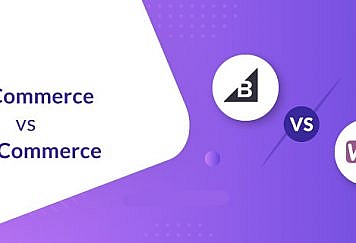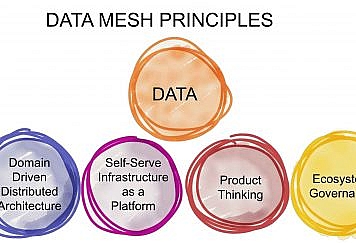In an era dominated by digital transactions and online connectivity, launching a digital marketplace has become an enticing venture for entrepreneurs seeking to tap into the vast potential of e-commerce. Before embarking on this journey, it’s crucial to understand the digital marketplace landscape, which is characterized by diverse platforms, consumer behaviors, and technological advancements. So, without further ado, let’s figure out how to create an online marketplace.
Marketplace Planning
Defining Your Marketplace Concept
The first step in launching a successful digital marketplace is defining your concept. What products or services will your platform offer? Who is your target audience? Understanding your unique value proposition and niche market is essential for differentiation in a competitive landscape. Clearly articulate your marketplace concept to guide subsequent decisions in the planning process.
Conducting Market Research
Thorough market research is the foundation of a successful digital marketplace. Identify your competitors, analyze consumer preferences, and assess market trends. Understanding the needs and pain points of your target audience allows you to tailor your platform to meet their expectations and stand out in the market. A reliable software development partner can help you with this. Sloboda Studio has been creating marketplaces since 2010. Their vast experience in the industry allows them to navigate the market easily and will help you research the conditions for your business.
Crafting a Solid Business Plan
A well-crafted business plan is the roadmap to your marketplace’s success. Outline your business objectives, revenue model, marketing strategies, and financial projections. A comprehensive business plan not only serves as a guide for your venture but also becomes a valuable tool when seeking funding or partnerships.
Platform Selection
Choosing the Right Technology Stack
Selecting the right technology stack is a critical decision that impacts your marketplace’s performance and scalability. Consider factors such as server infrastructure, databases, and programming languages. A robust and scalable technology stack ensures a stable foundation for your platform as it grows.
Custom Development vs. Ready-Made Solutions
Decide whether to opt for custom development or ready-made solutions for your marketplace. Custom development offers tailored solutions but can be time-consuming and expensive. Ready-made solutions provide a quicker launch but may have limitations. Assess your budget, timeline, and specific requirements to make an informed decision.
Design and User Experience
Designing an Engaging User Interface
An engaging and intuitive user interface is paramount for attracting and retaining users. Invest in a professional design that aligns with your brand and enhances the overall user experience. Intuitive navigation, visually appealing layouts, and clear calls to action contribute to a positive user interface.
Optimizing for Mobile
Mobile optimization is no longer a choice but a necessity in the digital marketplace. With a significant portion of online transactions occurring on mobile devices, ensure that your platform is responsive and provides a seamless experience across various screen sizes. Mobile optimization contributes to user satisfaction and widens your reach.
Enhancing User Experience
User experience (UX) goes beyond aesthetics; it encompasses the entire journey a user takes on your platform. Conduct usability testing, gather feedback, and iterate on your design to enhance the overall user experience. A user-friendly marketplace encourages repeat business and positive word-of-mouth referrals.
Content Management and SEO
Managing Marketplace Content
Effective content management is crucial for showcasing products or services on your digital marketplace. Implement a user-friendly content management system (CMS) that allows easy product uploads, updates, and categorization. Regularly update content to keep your platform fresh and engaging.
Implementing Effective SEO Strategies
Optimizing your digital marketplace for search engines is essential for visibility and organic traffic. Conduct keyword research, optimize product descriptions, and ensure that your website structure is search engine-friendly. Implementing effective SEO strategies from the start positions your marketplace for long-term success.
Payments and Security
Integrating Secure Payment Gateways
The security of financial transactions is a top priority for any digital marketplace. Integrate secure payment gateways that encrypt sensitive information and comply with industry standards. Providing users with multiple payment options enhances convenience and trust.
Ensuring Transactions Security
In addition to secure payment gateways, implement robust security measures to protect user data and prevent fraudulent activities. Regularly update security protocols, use encryption technologies, and stay informed about the latest cybersecurity threats. Building a secure environment instills confidence in your users.
Addressing Taxes and Fees
Clearly communicate and address taxes and fees associated with transactions on your digital marketplace. Understand the tax implications for both buyers and sellers in different regions. Transparency in pricing and fees builds trust and helps prevent disputes.
Marketing and Promotion
Developing a Marketing Strategy
A comprehensive marketing strategy is essential for creating awareness and driving traffic to your digital marketplace. Utilize a mix of online and offline channels, including social media, email marketing, influencer partnerships, and traditional advertising. Tailor your marketing efforts to your target audience and leverage your unique selling points.
Leveraging Social Media and Advertising
Social media plays a significant role in promoting digital marketplaces. Utilize platforms like Instagram, Facebook, and Twitter to showcase products, engage with your audience, and run targeted advertising campaigns. Social media presence enhances brand visibility and fosters a community around your marketplace.
Launch and Growth
Pre-launch Testing and Checklist
Before launching your digital marketplace, conduct thorough testing to identify and address any issues. Test the platform’s functionality, security, and user experience. Create a pre-launch checklist to ensure that all elements, from product listings to payment gateways, are ready for a smooth launch.
Scaling Your Marketplace
After a successful launch, focus on scaling your marketplace. Monitor user feedback, analyze performance metrics, and iterate on your platform based on user behavior. Explore opportunities for partnerships, expansion into new markets, and the introduction of new features to keep your marketplace dynamic and competitive.
Final Thoughts
Launching a digital marketplace is an exciting and rewarding endeavor, but success requires careful planning and execution. By understanding the digital marketplace landscape, strategically planning every aspect of your venture, and continuously adapting to market dynamics, you can position your platform for growth and sustained success. Follow this step-by-step guide to navigate the complexities of launching your digital marketplace and build a platform that not only meets user needs but also stands out in the competitive online marketplace landscape.
Follow TechStrange for more Technology, Business and Digital Marketing News.





